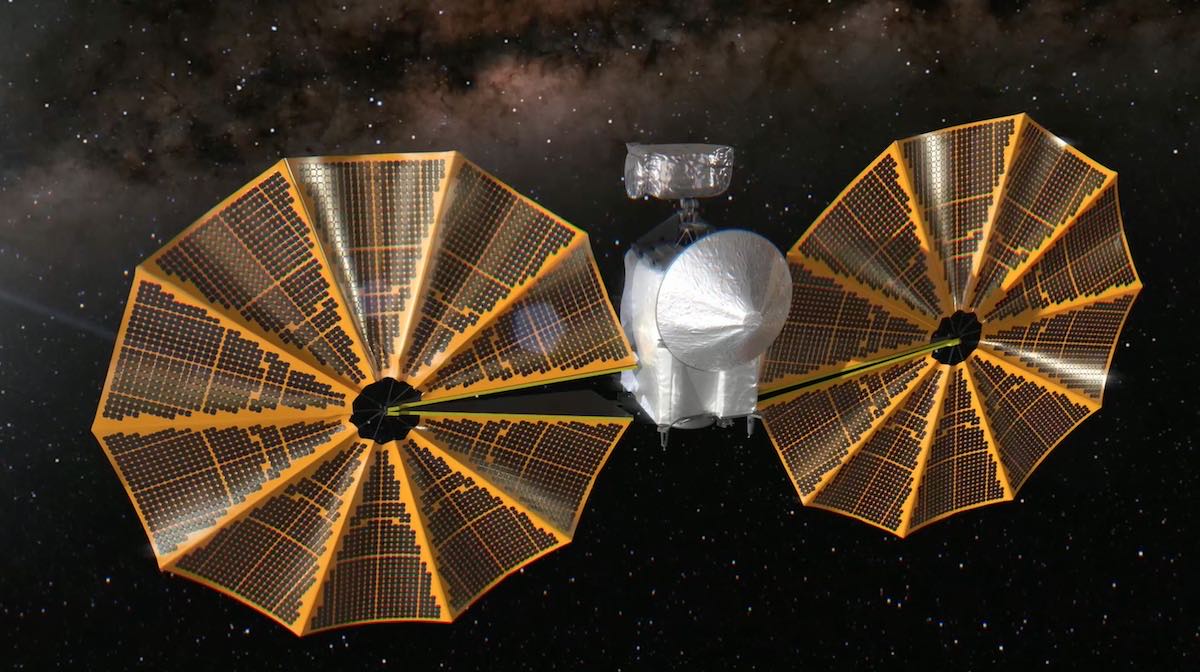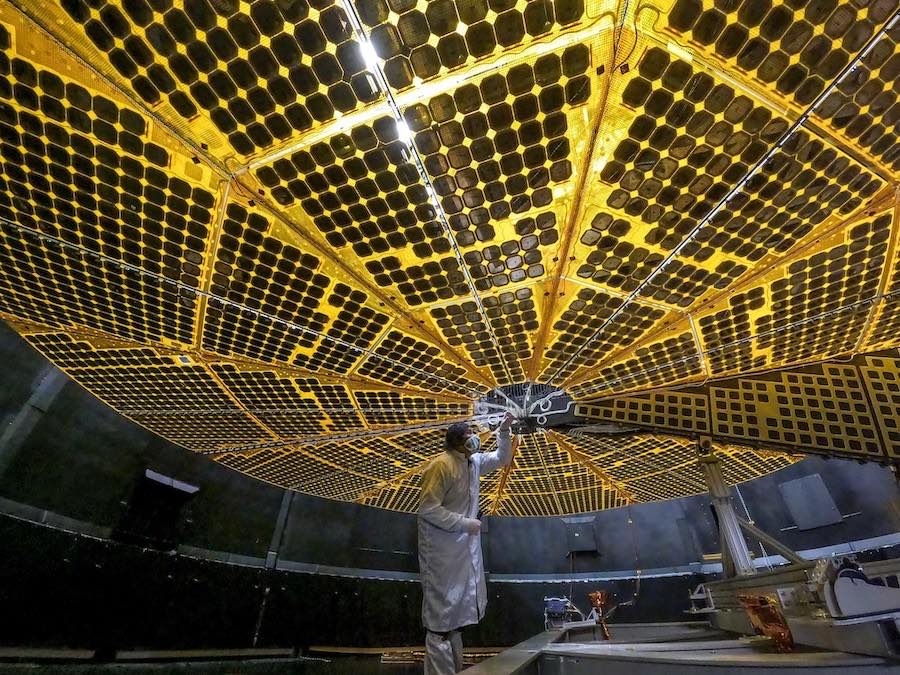
A NASA official said Monday there is “widespread optimism” that a solar array snag discovered on the Lucy asteroid probe after its launch over the weekend will not jeopardize the spacecraft’s 12-year exploration mission.
Lucy’s two solar arrays were folded up on each side of the box-shaped spacecraft during launch Saturday from Cape Canaveral aboard an Atlas 5 rocket. One of the two solar array wings fully unfurled and latched after launch, but NASA says it did not receive confirmation that the other wing latched into place.
The Atlas 5 deployed the Lucy probe nearly an hour after liftoff, sending the 3,300-pound (1,500-pound) spacecraft on an escape trajectory into the solar system. The launch kicked off a $981 million mission to explore the Trojan asteroids, a primordial population of small worlds leading and trailing Jupiter in its orbit around the sun.
Lucy is the mission is the first to explore the Trojan asteroids, which scientists say are leftover building blocks similar to objects that came together to form the solar systems giant outer planets. The probe will fly by seven Trojan asteroids between 2027 and 2033, plus one object in the main asteroid belt in 2025.
A few minutes after separating from the Atlas 5 launcher, Lucy began a pre-programmed sequence to unfold the solar arrays like giant Chinese fans. Fully deployed, the UltraFlex solar wings span about 24 feet (7.3 meters) in diameter, the circular power arrays to ever fly in space.
Both solar arrays are generating power, and Lucy’s batteries are fully charged, said Lori Glaze, director of NASA’s planetary science division.
“The spacecraft is stable and healthy, and it’s safe,” Glaze said Monday in a virtual town hall meeting by NASA’s science mission directorate. “It’s not in any danger, at this point, in this configuration. So we are taking our time in determining what’s going on with the solar array, and developing a path forward on how to remediate.”
“We’re very happy to report that we are getting most of the power we expected at this point in the mission,” said Joan Salute, associate director for flight programs at NASA’s planetary science division. “It’s not 100%, but it is fairly close. So that is great news.’
In an interview with Spaceflight Now, Salute said the power output from the solar arrays appears to be “most likely above 90%” of the expected level of 18,000 watts.
“We don’t know if it’s a latch problem, or that it is only partially deployed,” Salute said.
Lucy will become the farthest spacecraft from the sun to ever rely on solar power, reaching a maximum distance of 530 million miles (853 million kilometers), nearly six times farther than Earth’s orbit. When it reaches the Trojan asteroids, Lucy’s solar arrays were expected to generate just 500 watts of power.
That level power output is sufficient to feed Lucy’s three science instruments, which only need about 82 watts of power during each asteroid encounter. Lucy’s flight computer, communications system, and other components will also draw on power generated by the UltraFlex arrays.
Salute said controllers may attempt to command Lucy to re-attempt a full deployment of the solar array.
“They’re checking different analyses, making sure that that would be safe to implement,” she said. “One of the steps that they would be taking in the fairly short term would be to provide a second attempt at full deployment and latching.”

Lockheed Martin, the prime contractor for the Lucy spacecraft, oversees mission operations from a control center near Denver.
Although the solar arrays are generating sufficient power, engineers are also evaluating whether it is safe to fire the spacecraft’s main engine with an unlatched solar array. The mission’s first major deep space maneuver is tentatively scheduled for mid-November.
“At this point in time, they hope to go ahead with that maneuver, but it is too early to tell,” Salute said.
The spacecraft has continued firing its smaller attitude control thrusters without any issues, she said.
“They just want to really get a little more understanding under their belt about which would be safer — to re-deploy or to operate as is,” Salute said. “And I don’t think they have a firm answer on that option quite yet.”
Managers have postponed one other major post-launch activity to allow engineers to address the solar array issue. Lucy’s instrument platform was supposed to release and deploy two days after launch. That has been temporarily put on hold, according to Salute.
“There’s still widespread optimism that this can be overcome, or worked with,” Salute said.
Email the author.
Follow Stephen Clark on Twitter: @StephenClark1.
